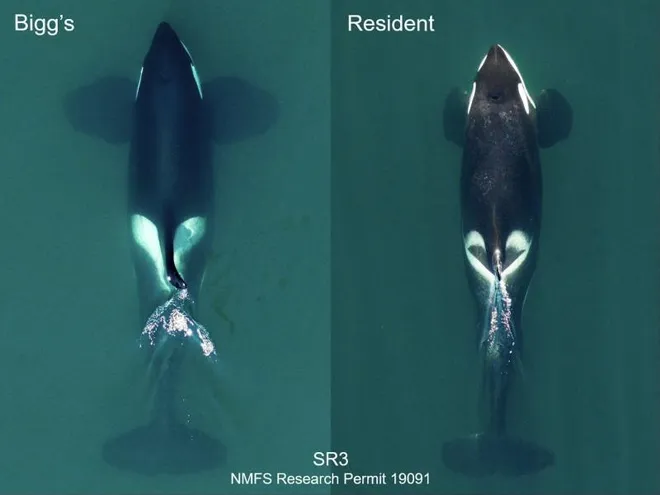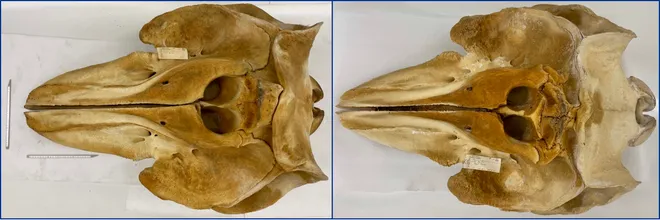Are these killer whales actually two separate species? New research calls for distinction

Scientists say they discovered that two well-known types of killer whales in the North Pacific Ocean are actually two separate species and not just different races.
In a study published Wednesday, researchers noticed distinct differences between resident killer whales, which are listed as endangered, and Bigg’s killer whales.
Bigg's killer whales are named after Michael Bigg, the Canadian scientist that first noted the differences between the two species in the 1970s. Despite living in the same waters, Bigg found that the two whales never "mixed" in with each other, a sign that the two were different species, wrote the National Oceanic and Atmospheric Administration on Wednesday
A group of scientists from NOAA Fisheries and universities, led by Phillip Morin, a research molecular geneticist, further proved the theory with their study. The team assembled genetic, physical, and behavioral evidence that they say proves the two whales are different species.
The NOAA states that the Taxonomy Committee of the Society of Marine Mammalogy will decide if it will recognize the new species in its official list of marine mammal species. The decision to accept the study's findings and categorize the whales as separate species will likely be made at the committee's next annual review this summer.
Any human on the menu? Nah...What do sharks eat? Surprising feeding habits of great white sharks, hammerheads and more.
How many species of whale are there?
Around the world, killer whales have often been thought to be one species, Orcinus orca, with many different ecotypes, meaning they're the same animal, but made up of different races.
Morin told USA TODAY this is because in the 1960s, taxonomists and biologists who categorize different organisms tried proving the Orcinus was made up of different species, but did not have enough evidence to prove their theories.
"The previous descriptions of different killer whale species were often based on observations, drawings, or single skulls in different parts of the world," said Morin.
Because of the limited material they had, the taxonomists decided there was not enough evidence to recognize them, and said there was only one species, O. orca.
Today, things are a bit different. According to the study, as many as 23 species and four subspecies have been named in literature, all falling under the previously mentioned Orcinus genus.
Are they that different?
"They’re the most different killer whales in the world, and they live right next to each other and see each other all the time,” said Barbara Taylor, a former NOAA Fisheries marine mammal biologist, said in a statement. “They just do not mix.”

The study states that killer whales are categorized into different species around the world because of the differences in the morphology of their skulls.
The Bigg's killer whale's skull has a bigger beak, which according to the NOAA, is believed to be an adaptation that allows the whale to capture bigger prey, like marine mammals.
According to the NOAA release, the whale's incredibly different evolutionary trajectory could explained by what they eat.
"Southern Residents are listed as endangered in part because of the scarcity of their salmon prey," states the release. "Bigg’s killer whales, by contrast, have multiplied while feeding on plentiful marine mammals, including California sea lions."

Differences between the whales:
- Resident killer whales maintain tight-knit family pods while Bigg’s killer whales roam in smaller groups
- Residents prey on salmon and other marine fish, while Bigg's preys on seals and whales
- Residents' skulls are smaller and designed to capture small prey, like fish, while Bigg's skull is bigger and meant to capture sizable meals, like sea lions.
Disclaimer: The copyright of this article belongs to the original author. Reposting this article is solely for the purpose of information dissemination and does not constitute any investment advice. If there is any infringement, please contact us immediately. We will make corrections or deletions as necessary. Thank you.




